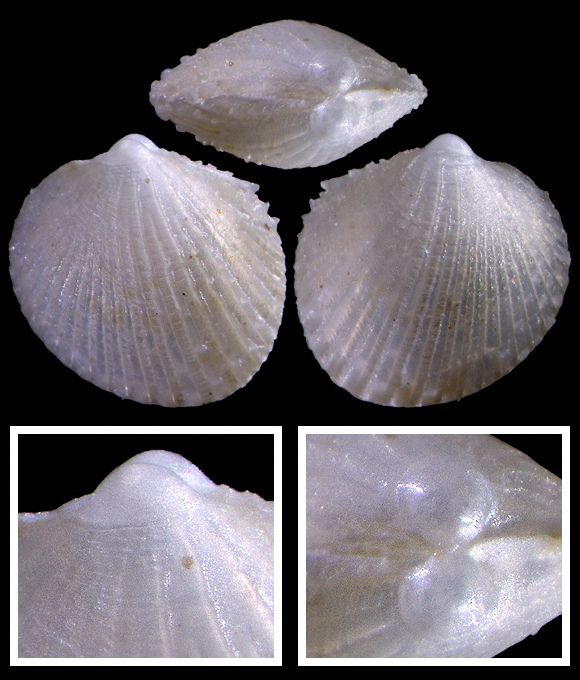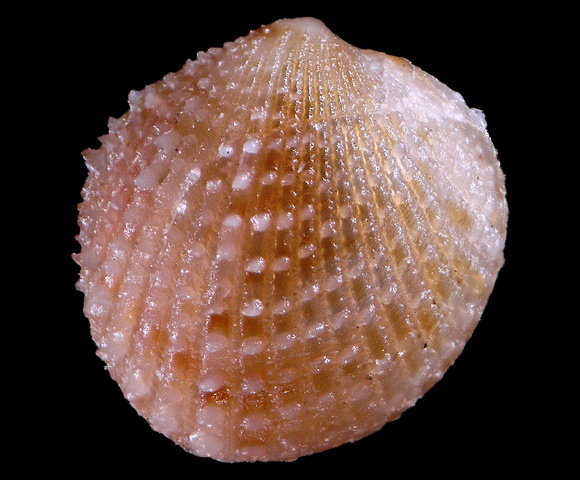van Aartsen & Goud, 2001

Filter feeder in the circalittoral, continental shelf and slope.
« Shell rounded, more or less equilateral and inflated. Valves thin and transparent: the outside ribs shine through overmost of the inside of the shell. There are about twenty-five ribs. The anterior ribs are decorated with straight plates, most of the ribs in the middle are smooth but a few are decorated with round dots. These ribs are relatively close to each other. On the posterior side five to seven ribs carrying strong spines are present. The interstices between the ribs show many concentrically placed thickened growth lines. The smooth prodissoconch measures 110-140 μm. The hinge is rather weak, the cardinal teeth protruding ventrally below the narrow hinge plate. Many of the shells are variegated with light-brown blotches on a yellowish background. No white specimens have been seen. Dimensions (height x width) up to 9 x 9 mm. » – van Aartsen & Goud: “European Marine Mollusca: notes on less well-known species. XVII”, Basteria 65, p.117-122.
A juvenile from 40m deep, Le Scole, Isola del Giglio, Toscana, W. Italy. 1,4mm. The prodissoconch, rather visible here, is very small compared to the one of P. minimum.

« Etymology: this species is named after Ferdinando Carrozza, Soiana, Italy, well-known malacologist and long-time friend of the first author. »
100m deep, Saronic Gulf, SE. Greece. 2,15mm.